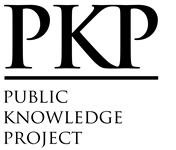Road Map Towards Zero Water Milk-processing Plants - Experiences from a Danish Public-Private Partnership
Abstract
A three-year public-private partnership project in Denmark, with participation of food and environment authorities, branch organizations, technology providers, universities and applied research organizations, mapped the water use and installed water-saving technologies in four cheese-producing dairy plants and a milk-processing plant with mixed dairy products.
The objective of the work was: (i) to document that reuse of water in the participating milk processing plants did not compromise product safety, and (ii) to develop methodologies to select best technologies as well as monitoring and control procedures for milk processing.
Different mapping approaches were tested: water meters with online data transmission, detailed mapping of all water uses and a mapping that focused on the water uses which were expected to have the largest water-saving potential.
Based on the results of the water use mapping, water efficiency scenarios for the plants were developed, and solutions were selected according to their water-saving potential, applicability in the dairy sector, cost-efficiency and sustainability.
Selected technologies were tested in full-scale in a number of dairy processes, including reuse and increased efficiency in utilities and cleaning operations, optimization and renewal of milk-processing operations, reuse of permeate from RO filtration for concentration of whey and reuse of dairy waste water in utility functions. The investment costs for the installation of technologies were recorded as well as the actual water savings, energy savings and savings in labour time. The savings were substantial and could pay back the investment costs, often in less than a year - with the longest payback time being five years.
A branch code was developed by the partnership providing guidance for water reuse in the dairy industry, including HACCP, monitoring and control procedures for reuse of water in CIP and other dairy processes and for storage and reuse of water from whey and milk concentration.
A dairy, which applies the guidance and regulations in the branch code and adopts a combination of the technologies tested by the partnership, may save up to 60% of its present water use. The partnership also led to a vision for a zero water dairy, which would require; however, that new technologies and regulations would be developed and tested.
Full Text:
PDFDOI: https://doi.org/10.5296/emsd.v7i2.12893
Refbacks
- There are currently no refbacks.
Copyright (c) 2018 Palle Lindgaard-Jorgensen, Gert Holm Kristensen, Martin Andersen

This work is licensed under a Creative Commons Attribution 4.0 International License.
Environmental Management and Sustainable Development ISSN 2164-7682
Copyright © Macrothink Institute
To make sure that you can receive messages from us, please add the 'macrothink.org' domain to your e-mail 'safe list'. If you do not receive e-mail in your 'inbox', check your 'bulk mail' or 'junk mail' folders.
------------------------------------------------------------------------------------------------------------------------------------------------------------------------
